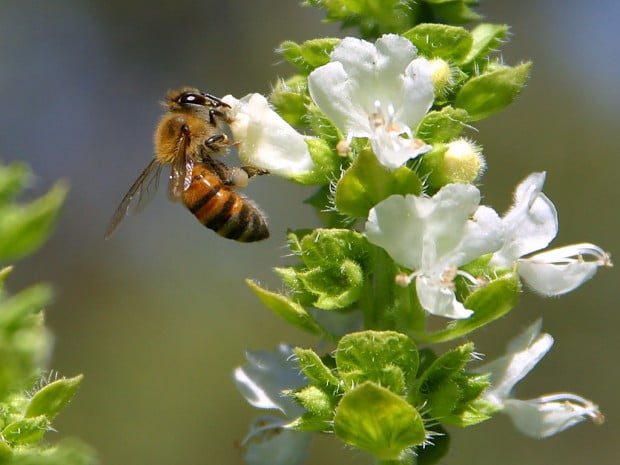
My recent passionate broadcast across Australia on the “War Against Nature” elicited many emails, especially from children. They all wanted to know: “Why are adults killing nature?”
What kind of a world are we leaving for our children?
Since 2009, I’ve been writing about the plight of beleaguered honeybees due to toxic chemicals. Over five billion pounds of insecticides — one third of them are lethal neonicotiniods (neonics) — are thrust into our biosphere each year.
Neonics are a neuro-active insecticide fashioned after nicotine; neonics poison nerves and prevent acetylcholine from enabling neurons to communicate with each other and muscle tissue. In humans, this substance would trigger Parkinson’s and Alzheimer’s diseases.
My colleague Dr Henk Tennekes reported the deadly effects of neonics, both on soil organisms and their “knock-on-effects” causing starvation to meadow birds and their predators, Goshawks, as well as contaminating waterways for many years thereafter across Western Europe.
It seems that his thorough research was blatantly disregarded elsewhere around the globe by feckless government regulatory bodies. An intrepid Dr Christy Morrissey of the University of Saskatchewan set out to investigate just how wide-spread the effects of neonics were across the prairies of Western Canada. Eighty to 90 percent of the wetlands she studied were contaminated with these odious poisons, which remain in toxic concentrations within the waterways for years. She too found “knock-on-effects” in soils extending up the food chain, which reduced populations of many animals.
Earthlings are knowingly annihilating the exquisite tapestry of life, or Earth’s biodiversity. The strength of an ecosystem depends upon the diversity of species. By killing biodiversity, we are killing ourselves, and it’s happening very quickly, globally.
Dr Morrissey asked some poignant questions about the food we currently produce on our globe: “Is that the cost, no birds? Or having no butterflies? Or having no bees?”
It would appear that the human race believes it does not need to coexist with nature; this, however, could not be farther from the real truth. A recent study discovered that the demand for honeybees in 41 European countries between 2005 and 2010 grew five fold whilst half of those countries don’t have enough honeybees to pollinate their food crops. Some countries like the U.K. were in far worse shape because they only have one quarter of the necessary honeybees to feed 63.3 million people.
So far, nature and her glorious wild bees have graciously picked up the slack of the dying honeybees by pollinating the lion’s share of our food crops worldwide.
But how much longer can nature withstand this relentless bee-killing chemical assault?
This we know: Wild bees die from exposure to neonics, and unless there is a worldwide ban on the 1,000 kinds of neonics — wild bees will die, too, and the world’s food supply will plummet, rapidly.
Last May (2013), amidst over 500 billion commercial honeybee deaths over the past six years alone with a $2B price-tag for beekeepers, the EPA green-lighted another neonic called Sulfoxaflor.
I urge you to take a few moments and write your political representative(s) and tell them to ban neonics. Please support Saving America’s Pollinator Act as our future depends upon it.
Our children’s legacy – biodiversity – is at perilous risk from these pernicious poisons!
Earth Dr. Reese Halter is a broadcaster, biologist, educator and the author of The Incomparable Honeybee.